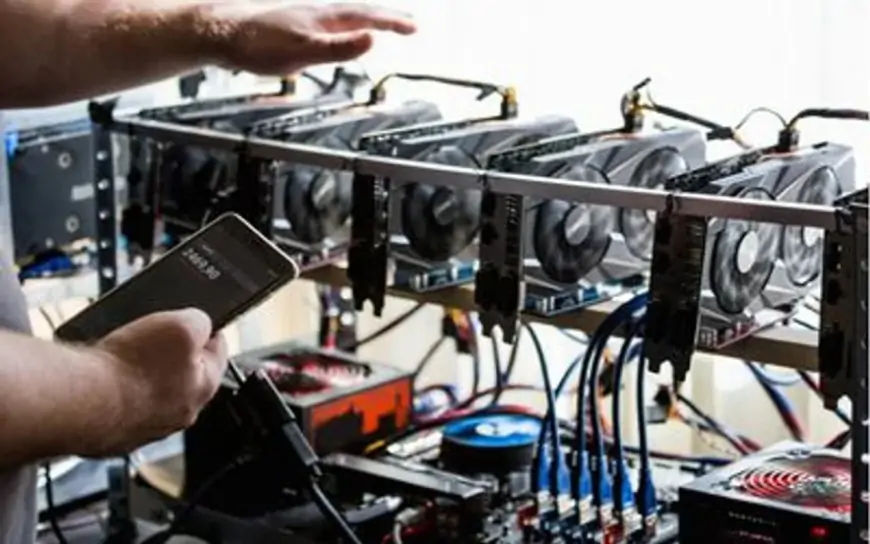How cryptocurrency mining pools operate: An overview
Cryptocurrency mining pools combine computing power to enhance chances of earning rewards, distributing profits among participants efficiently.

Understanding mining pool
A mining pool is formed by miners collaborating to solve cryptographic challenges for certain blockchains, earning cryptocurrency rewards. These pools emerged due to the high difficulty of mining, which favored large capacity miners, pushing smaller miners to join forces to compete effectively.
Cryptocurrency mining serves two primary purposes: introducing new coins into circulation and verifying transactions for inclusion in the blockchain. It relies on internet-connected devices running specialized software to perform complex calculations. Miners compete to solve cryptographic puzzles, with the first successful miner earning the right to add a new block to the blockchain and collect rewards, consisting of newly minted coins and transaction fees. As more miners join the network, the difficulty increases, demanding greater computational power and energy consumption. This competitive environment has led to the formation of mining pools, allowing participants to combine resources for improved efficiency and profitability.
Pooling resources: Enhancing mining efficiency through collaboration
A mining pool is a group of miners who collaborate to improve their chances of finding blocks compared to mining individually. By pooling their computational resources, miners increase their collective processing power, enhancing competitiveness and the likelihood of earning rewards.
To illustrate, imagine a single gold digger who can excavate 100 square meters per day. It would take them 100 days to explore one hectare of land for gold. Conversely, if 100 diggers with the same capacity work together, they can finish the job in just one day. Any gold they find is divided equally among all participants, assuming everyone contributed equally to their assigned areas.
Similarly, combining nine mining devices, each generating 335 megahashes per second (MH/s), results in a combined output of approximately three gigahashes. This pooled output is faster and improves the chances of solving mining puzzles. However, this collaborative approach entails sharing the rewards among pool members, contrasting with the sole ownership of rewards in individual mining.
Operations of a mining pool
A mining pool serves as an organizer for its members, coordinating the distribution of tasks, pooling computational power for greater efficiency in finding rewards, tracking individual contributions, and distributing rewards based on verified work output.
The pool may levy fees on its members for these services.
Tasks are assigned to members in two ways. The traditional method assigns a specific nonce range to each member, which miners use to generate a hash that meets network criteria. After completing their assigned range, members request new work units.
Alternatively, a second method allows members flexibility to choose their tasks without direct pool assignment, ensuring efficient use of resources akin to gold diggers avoiding overlap in land exploration.
Reward distribution in mining pools
Mining pools distribute rewards based on shares contributed by members, which reflect their computational effort towards discovering new blocks in the blockchain.
Shares are categorized into accepted and rejected. Accepted shares contribute effectively to block discovery and are eligible for rewards, whereas rejected shares do not count towards rewards, often due to timing issues.
Ideally, miners aim for all shares to be accepted, but some rejections are unavoidable due to the nature of computational speed and timing constraints.
Pools use various reward distribution methods based on accepted shares:
- Pay-per-share (PPS): Provides instant payouts based on each accepted share, allowing members to withdraw earnings immediately.
- Proportional (PROP): Rewards miners proportionally to their contributed shares by the end of a mining round.
- Shared Maximum Pay Per Share (SMPPS): Similar to PPS but caps payouts at the pool's maximum earnings.
- Equalized Shared Maximum Pay Per Share (ESMPPS): Similar to SMPPS but ensures equal distribution of payments among all miners in the pool.
Additional methods include Double Geometric Method (DGM), Recent Shared Maximum Pay Per Share (RSMPPS), Capped Pay Per Share with Recent Backpay (CPPSRB), and Bitcoin Pooled Mining (BPM).
Miners should consider each pool's reward distribution method and associated fees (typically 1% to 3%) before joining to optimize earnings.
Should you join a mining pool?
For those unable to afford multiple high-end mining machines yet wish to engage in cryptocurrency mining, joining a mining pool becomes essential. It becomes worthwhile if your machine can generate substantial work for the pool. Whether it's financially beneficial depends on your contributions to the pool and the returns you receive, especially if you're aiming to recover equipment costs.












































